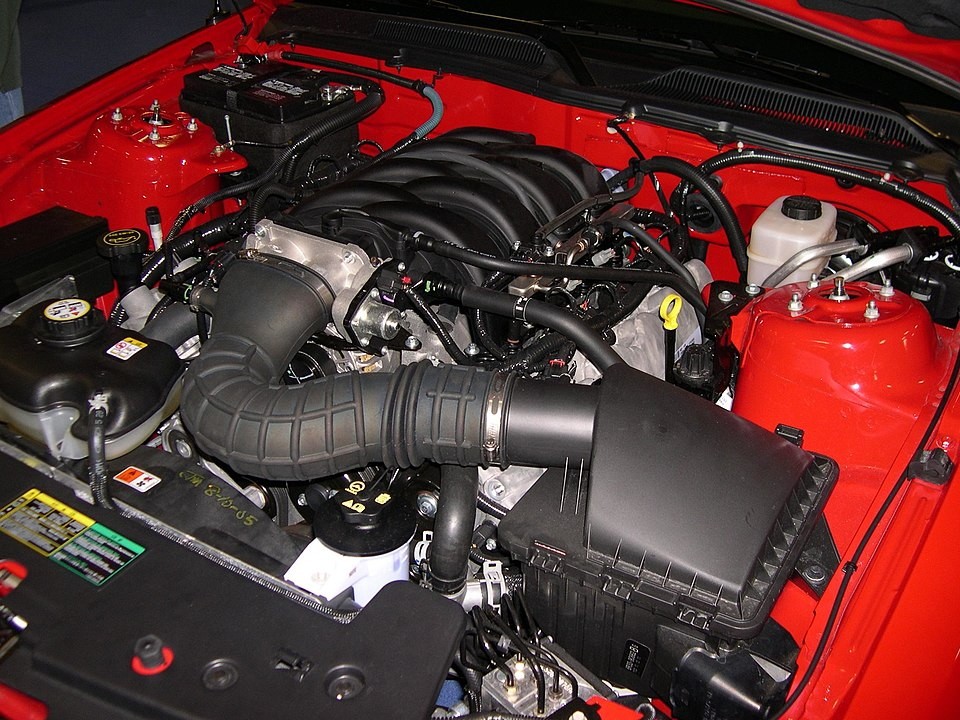When it comes to automotive legends, Ford has had its share of glory—and its fair share of disaster. For over a century, the Blue Oval has pushed the envelope on innovation, performance, and brute force under the hood.
From the bulletproof workhorses that made Ford trucks a household name to the ticking time bombs that left loyal drivers stranded on the side of the road, Ford engines have run the gamut from heroic to horrifying.
This article pulls no punches. We’re diving into five Ford engines that have earned near-mythical reputations for their rock-solid durability—powerplants known to rack up hundreds of thousands of miles with minimal fuss. These are the engines mechanics admire and owners swear by, the ones that make you say, “Yeah, this is why I drive a Ford.”
But for every icon, there’s a cautionary tale. We’re also calling out five notorious Ford engines that failed to live up to the hype—or even basic expectations. Engines plagued with design flaws, reliability nightmares, or catastrophic failures that cost owners thousands and left a stain on Ford’s otherwise storied engine lineup.
Ford Engines With Legendary Durability
Whether you’re a die-hard Ford enthusiast or just engine-curious, this list is your no-BS guide to what Ford got right—and what they really, really got wrong. Buckle up.
1. 5.0L Coyote V8 (2011–Present)
The modern 5.0L Coyote V8 has become a cornerstone of Ford performance and reliability. Found in the Mustang GT and F-150, this naturally aspirated engine combines old-school V8 durability with modern technology like dual overhead cams and variable valve timing.
Owners regularly report these engines surpassing 200,000 miles with little more than routine maintenance, and they handle modifications and high RPMs exceptionally well.
The Ford 5.0 Modular “Coyote” is a completely redesigned 5.0-liter gasoline V8 engine that debuted in the 2011 model year, replacing the earlier 4.6L and 5.4L Modular engines previously used in the Ford Mustang GT and Ford F-150.
This new 5.0L V8 was engineered specifically to rival the GM 6.2L V8 and the latest Chrysler 6.4L Hemi. In doing so, Ford engineers successfully created a more compact displacement engine that could match its competitors in power output—while still operating on standard 87 octane unleaded gasoline.

Though the 5.0L Coyote does not share any internal components with its predecessors, it retains several key dimensional features from the 4.6L V8: the 8.937-inch (227.0 mm) deck height, the 3.937-inch (100.0 mm) bore spacing, and the same bell housing bolt pattern.
These design choices allowed Ford to manufacture and assemble the engine using existing Modular engine tooling and production lines.
The newly designed 5.0L V8 is based on an entirely new aluminum cylinder block featuring pressed-in cast-iron liners and a 90-degree V-angle between the cylinder banks. It includes four-bolt main bearing caps and a deep-skirted crankcase for added structural integrity.
Internally, the 5.0 is fitted with a forged steel crankshaft and forged powdered metal connecting rods. The connecting rods measure 5.933 inches (150.7 mm) in length. In addition, the block is equipped with piston-cooling jets, enhancing thermal management and overall durability.
2. 4.9L Inline-6 (300 I6) (1965–1996)
The 300 cubic inch inline-6 is one of Ford’s most durable powerplants ever. Known for its low-end torque and simple pushrod design, this engine powered Ford trucks and vans for decades.
It is beloved for running forever under harsh conditions farmers, mechanics, and off-roaders still rave about its bulletproof construction and ability to hit 500,000 miles with minimal issues.
The Ford 300 Six—also known as the Ford Inline Six or the 4.9-Liter Inline Six—holds legendary status among enthusiasts, mechanics, and anyone who values reliability over flash.
Introduced in 1965 and produced until 1996, this engine became a cornerstone of Ford’s truck and van lineup, renowned for its exceptional durability, abundant low-end torque, and mechanical simplicity.
Whether you’re restoring a classic truck, searching for a dependable workhorse, or simply appreciating one of Ford’s most reliable engines, the 300 Six stands as a true icon of practical, no-nonsense engineering.
The 300 Six features an inline 6-cylinder configuration with a displacement of 300 cubic inches (4.9 liters). It uses a bore and stroke measurement of 4.00 inches by 3.98 inches and a compression ratio of 8.8:1, although this can vary slightly depending on the model year and specific vehicle application.
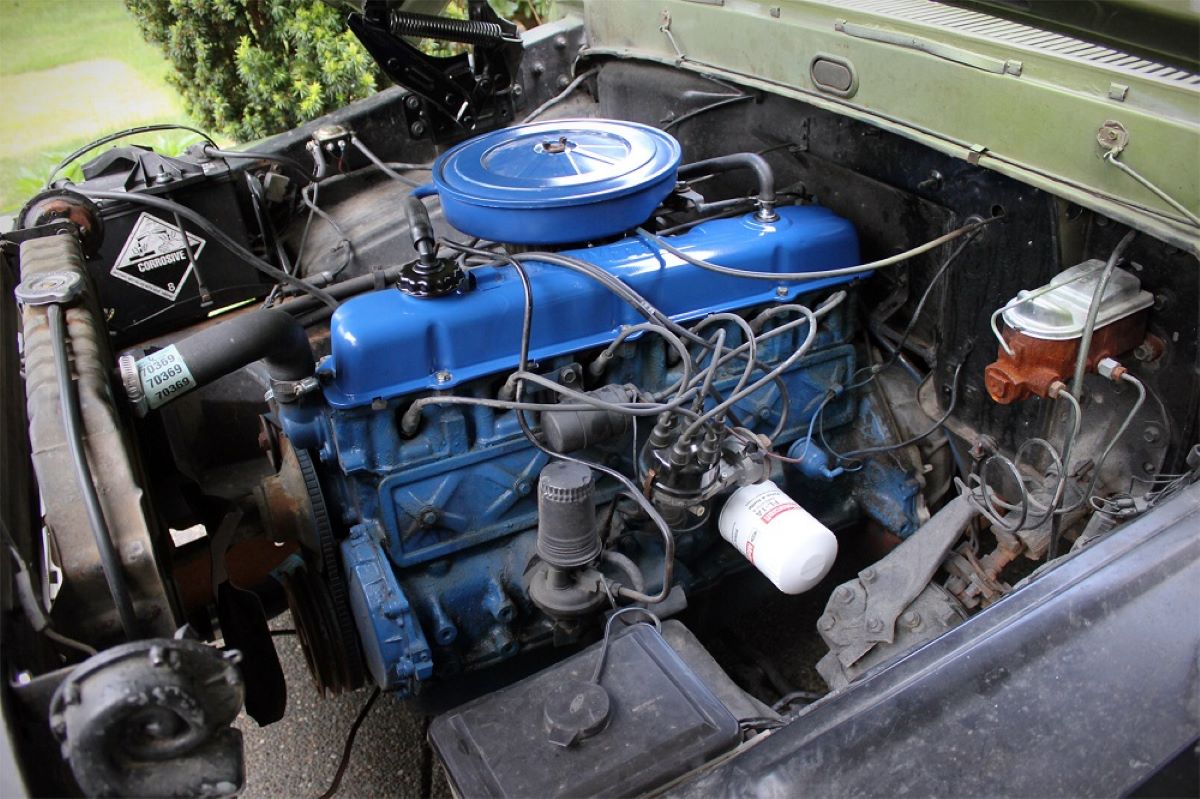
In terms of power output, this engine produces approximately 117 to 120 horsepower at 3,000 RPM, and torque figures range from about 223 to 260 lb-ft at a low 1,600 RPM, making it ideal for hauling and heavy-duty use.
The ignition system is a traditional distributor-based setup, with a recommended spark plug gap of 0.044 inches, though this may differ slightly depending on the year.
For cooling, the engine uses a water-cooled system paired with a mechanical fan, although some later versions were equipped with electric fans. Lubrication is handled through a system that holds around 6 quarts of oil (including the filter), with SAE 10W-30 oil recommended, depending on the climate and driving conditions.
The Ford 300 Six also boasts a rugged overhead valve (OHV) design, featuring two valves per cylinder and a camshaft driven by a timing chain.
At the heart of its strength is a forged steel crankshaft—another reason for its reputation as a virtually indestructible engine. From farms to fleet vehicles to decades-old work trucks still running today, the 300 Six is proof that sometimes simple really is better.
Also Read: Top 10 Most Reliable Used Cars You Can Buy for Under $10,000 in 2025
3. 7.3L Power Stroke Diesel (1994–2003)
This turbocharged diesel V8 is often regarded as the holy grail of Ford truck engines.
Built by Navistar, the 7.3L Power Stroke earned a legendary status in Super Duty pickups thanks to its million-mile potential, excellent towing capability, and unmatched reliability.
Unlike its successors, it avoided complex emissions hardware, which means fewer breakdowns and more uptime.
The legendary 7.3L Power Stroke is a four-stroke, turbocharged V8 diesel engine engineered and built by International Navistar for a range of Ford’s light and medium-duty vehicle platforms.
It is most prominently associated with the Ford F-Series and later, the Super Duty pickup truck lines. This engine is rooted in International’s T444E platform (turbocharged, 444 cubic inches, electronically controlled), and is also sometimes referred to as the 7.3L DIT, short for “direct injection, turbocharged.”
This large-displacement V8 has earned widespread recognition across both consumer and commercial markets for its outstanding reliability and long service life.
Despite being outpaced by newer engines that utilize more advanced technologies, the 7.3L Power Stroke remains a favorite due to its robust performance and relatively simple maintenance. Though it was sophisticated for its era, it remains accessible for repairs and diagnostics, often without requiring advanced tools or technical expertise.
The 7.3L Power Stroke was introduced as the successor to the 7.3L IDI engine. Although the IDI was also developed by International Navistar and is still praised for its durability, it fell short in terms of power output and performance potential—critical shortcomings as the diesel truck market rapidly became more competitive.

Dodge’s 5.9L Cummins-powered Ram began attracting serious attention following the 1994 redesign, and GM’s Detroit Diesel had begun integrating electronic fuel metering systems to improve efficiency.
Faced with these evolving demands, Ford and International needed a next-generation engine that could hold its ground in overlapping yet distinct segments of the diesel market.
Ford debuted the 7.3L Power Stroke midway through the 1994 model year, offering it as an optional powerplant for the F-250, F-350, and F-Super Duty (chassis cab) truck models.
The launch was a clear success. The Power Stroke V8 quickly became a go-to engine in both pickup and chassis cab configurations. At the same time, International’s T444E variant found solid footing in medium-duty trucks and bus applications.
In its 1994 configuration, the 7.3L Power Stroke delivered 210 horsepower and 425 lb-ft of torque, while International offered multiple T444E configurations with outputs ranging from 175 to 230 horsepower and torque ratings between 430 and 605 lb-ft.
The 7.3L Power Stroke’s popularity is reflected in its production figures, which outpaced the diesel offerings of any other U.S. automaker during its time.
By 1999, Ford had delivered over 1 million Power Stroke diesel-equipped F-Series trucks to dealers across the United States. This momentum only grew with the launch of the Super Duty platform, and by 2002, the 2 millionth 7.3L Power Stroke-equipped Ford truck had rolled off the assembly line.
However, increasing regulatory pressure for better fuel economy and drastically reduced emissions would eventually bring this powerhouse’s run to an end.
Production of the 7.3L Power Stroke concluded by the close of the 2003 model year. While both the 7.3L and its successor, the 6.0L Power Stroke, were offered through much of 2003, by 2004 the 6.0L Power Stroke became Ford’s sole diesel option moving forward.
Also Read: 5 Trucks With the Best Factory Docking Stations and 5 Bare Consoles
4. 2.3L EcoBoost I4 (2015–Present)
While turbocharged engines usually raise concerns about longevity, Ford’s 2.3L EcoBoost has proven itself in a range of applications from the Mustang to the Ranger to performance-focused ST models.
With proper maintenance, this engine is known to exceed 200,000 miles without major issues. Its robust block, forged internals in some variants, and excellent thermal management contribute to its reliability.
Engines in this range were developed with the goal of delivering the same level of performance as naturally aspirated engines with larger displacement cylinders, while at the same time reducing both fuel consumption and emissions.
According to the manufacturer, this engine lineup “consumes 30% less fuel and is 15% more eco-friendly.” Ford viewed its EcoBoost technology as a more cost-effective and versatile alternative to hybrid and diesel competitors, which is why it was widely implemented across many of the company’s vehicles.

In 2015, Ford introduced the second generation of its 2.0-liter EcoBoost engine, along with a new 2.3-liter version. This 2.3-liter inline-four became the largest and most powerful four-cylinder engine in the EcoBoost family. It made its debut in the 2015 Lincoln MKC crossover and was later adopted for use in other models, including the Ford Explorer and the 350-horsepower Ford Focus RS in the following year.
Despite its growing presence across multiple models, the EcoBoost platform truly gained mainstream popularity through the Ford Mustang. In this application, the 2.3-liter engine delivered 310 horsepower and 320 lb-ft (434 Nm) of torque. Notably, the last time a turbocharged four-cylinder engine appeared in a Mustang prior to this was in the mid-1980s, when the Mustang SVO was released.
The 2.3-liter EcoBoost engine was essentially built on the foundation of the second-generation 2.0-liter EcoBoost and is commonly referred to as a “stroker.” Although both engines are produced at the same manufacturing facility in Valencia, Spain, the 2.3-liter version received reinforcements to handle its increased output and deliver improved durability.
5. 5.4L Modular V8 (Non-3V, 1997–2004)
The earlier 2-valve version of the 5.4L Modular V8 used in the F-150, Expedition, and E-Series vans was a workhorse.
While not known for power, it excelled in longevity. Simpler than its later 3-valve counterpart, the 2V 5.4L was relatively easy to maintain and rarely suffered from catastrophic failures. It’s not unusual to find these engines still running strong at 300,000 miles.
The 5.4-liter Modular V8 engine stands as a formidable force in the automotive world, leaving a lasting impression across multiple segments. Developed by Ford Motor Company, this engine belongs to the broader Modular engine family, which was introduced in the early 1990s.

The 5.4L variant made its official debut in the late ’90s and quickly earned a reputation for its solid performance and remarkable versatility. Originally engineered for larger vehicles, this engine proved its capability across a wide array of applications—from heavy-duty trucks to high-performance cars—demonstrating both its strength and adaptability.
At the heart of the 5.4L Modular V8 lies a DOHC (Dual Overhead Cam) configuration, which promotes superior airflow and enhances overall performance.
Some versions of this engine also feature aluminum construction, contributing to an improved power-to-weight ratio. Ford designed the 5.4L with a clear intent to strike the ideal balance between power and efficiency, making it a reliable choice for diverse driving scenarios and mechanical demands.
Ford Engines That Constantly Fail
Whether it’s timing chain disasters, spark plug catastrophes, or underwhelming durability, these engines earned their spot on the list not because of how well they ran, but how often they failed.
If you’re a buyer, a mechanic, or just a curious enthusiast, consider this a cautionary rundown of engines to watch out for—or avoid altogether. Let’s pull the hood back and take a hard look at the Ford engines that consistently dropped the ball.
1. 5.4L Modular V8 (3V, 2004–2010)
The 3-valve version of the 5.4L Modular V8 is infamous for reliability problems.
Found in millions of F-150s and Expeditions, it suffers from defective spark plugs that can break off in the cylinder head, VCT (Variable Cam Timing) issues, and failing timing chain tensioners.
Repair costs are high, and many mechanics recommend avoiding this engine entirely for long-term use.
The Ford 5.4 Triton V8 belongs to Ford’s Modular V8 engine family and is a naturally aspirated 5.4-liter gasoline-powered, eight-cylinder engine that made its debut in the 1997 Ford F-150. Fundamentally, the 5.4 is a stroked version of the 4.6-liter Modular engine, as both share very similar architecture.
Over its production span, the 5.4L engine came in three major versions: the 5.4 SOHC V8 with either 2-valve or 3-valve cylinder heads, and the more performance-oriented 5.4L DOHC 4-valve V8.
The 2- and 3-valve versions were primarily installed in Ford’s F-Series pickup trucks, while the 4-valve DOHC variant powered Ford’s most iconic sports and luxury vehicles, including the Ford GT supercar, the Ford Shelby GT500, the Ford Mustang SVT Cobra R, and several Lincoln models.
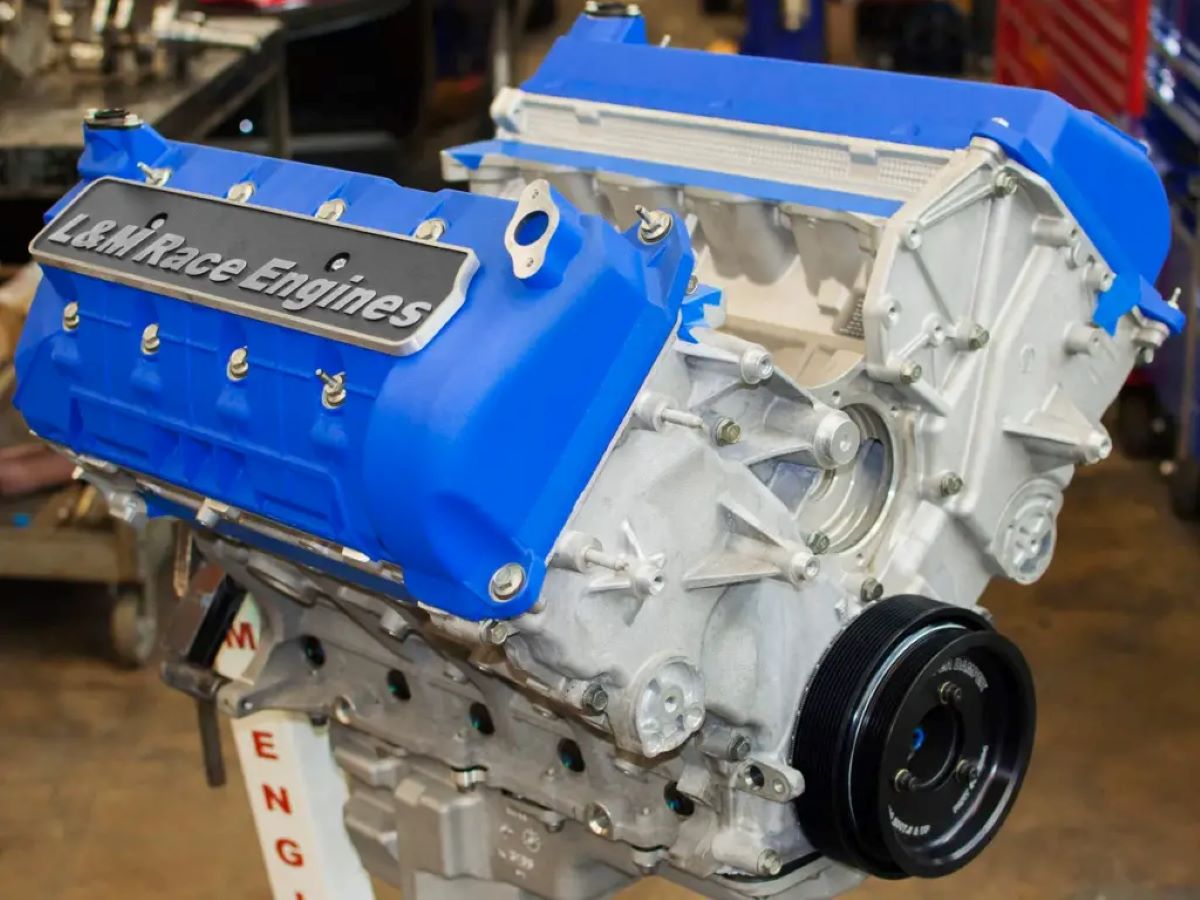
The first version, introduced in 1997, was the SOHC 2-valve 5.4L V8, which featured a cast iron cylinder block. Although it shared the same bore diameter as the 4.6L version, the longer stroke required a taller engine block deck height—10.079 inches (256.0 mm) compared to the 4.6L’s 8.937 inches (227.0 mm).
Inside, the engine was equipped with fracture-split powder metal connecting rods and lightweight aluminum pistons. In certain later applications, this version also received a forged steel crankshaft for improved strength. Each cylinder bank was topped with a SOHC aluminum head containing two valves per cylinder.
The engine featured dual timing chains—one per camshaft—located at the front of the engine. The valvetrain used roller finger followers and hydraulic lash adjusters.
It also came with aluminum valve covers and a composite intake manifold. All 5.4L V8 engines were equipped with an individual coil-on-plug electronic ignition system and an electronic sequential multi-port fuel injection setup. Production of the 5.4 2V engine was handled at the Windsor Engine Plant in Windsor, Ontario.
2. 1.6L EcoBoost I4 (2011–2016)
This small turbocharged engine, used in the Escape, Fusion, and Fiesta ST, has a bad reputation due to overheating, coolant intrusion, and even engine fires.

A major recall addressed coolant leaks that could lead to cracked heads, but even post-fix, these engines remain problematic. Many owners have faced engine replacements under 100,000 miles.
The Ford 1.6L EcoBoost is a turbocharged inline four-cylinder engine developed by Ford Motor Company for use in a range of vehicles, including subcompact, compact, midsize cars, and crossovers (commonly referred to as CUVs).
With a dual overhead cam (DOHC) layout, the 1.6L EcoBoost shares a close architectural relationship with the 1.5L EcoBoost I4 but distinguishes itself with a larger displacement and a unique exhaust system. It has been part of Ford’s EcoBoost lineup of turbocharged engines since 2014.
Ford’s EcoBoost I4 family, which also includes the 2.0L and 2.3L variants, was designed to replace small-displacement naturally aspirated V6 engines by delivering similar performance levels with significantly better fuel efficiency.
The 1.6L EcoBoost engine is constructed with a high-strength aluminum alloy open-deck cylinder block, which reduces overall weight and improves thermal management.
Key internal components include ultra-thin cast iron liners that are cast directly into the aluminum walls, a cast iron crankshaft, forged connecting rods, aluminum pistons, and piston pins coated with a diamond-like coating (DLC) for added durability. The oil pan is also aluminum, contributing to further weight savings.
Consistent with modern Ford engine designs, the 1.6L EcoBoost is equipped with double overhead belt-driven camshafts and Ford’s Twin Independent Variable Cam Timing (Ti-VCT) system, allowing for precise control of both intake and exhaust valve timing. The engine also employs a high-response Borg Warner KP39 low-inertia, water-cooled turbocharger, which is connected to a separate cast iron exhaust manifold, rather than using an integrated turbo-fold system.
3. 2.0L EcoBoost I4 (2010–2015)
While newer versions of this engine have improved, the early iterations in vehicles like the Escape, Fusion, and Focus were plagued by coolant intrusion into the cylinders, leading to engine failure.
Lawsuits and recalls followed, but the damage to consumer trust was done. Many drivers faced engine replacements before hitting six figures on the odometer.
The EcoBoost engine lineup is relatively recent, having been introduced by Ford for the 2010 model year. That year, the company launched three new engines: the 1.6L and 2.0L single-turbo inline-fours, along with a 3.5L twin-turbo V6.
The core goal behind EcoBoost was to reduce emissions and improve fuel efficiency without sacrificing the power levels typically associated with larger-displacement engines. To achieve this, Ford combined smaller displacements with turbocharging—a strategy that has proven highly effective.

The 1.6, 2.0, and 3.5 EcoBoost engines all remain in production today, and Ford has expanded the lineup over the years. The 2.0L EcoBoost initially debuted in various vehicles across both the North American and European markets.
In the U.S., it was first seen in models like the Volvo V60 and V70 before becoming a staple in the Ford Edge and Explorer, as well as in the Range Rover Evoque.
In 2015, Ford updated the 2.0 EcoBoost engine with a significant refresh that improved peak horsepower and broadened the engine’s usable power band.
The update also allowed compatibility with all-wheel drive systems, addressing a previous limitation where the engine was only available with front-wheel drive. Since then, Ford has continued to use the 2.0 EcoBoost across global markets. Depending on the application, Ford, Land Rover, and Lincoln rate the engine’s output between 203–250 horsepower and 221–280 lb-ft of torque.
As of 2023, the 2.0 EcoBoost was still found in a wide range of vehicles, including the Lincoln MKC, Nautilus, and Corsair, as well as the Ford Edge, Maverick, and Bronco Sport. Ford has shown no indication of halting production, and the 2.0 EcoBoost appears to have a strong future ahead.
4. 3.5L EcoBoost V6 (First Gen, 2011–2014)
Although the EcoBoost V6 has evolved into a reliable engine, the early versions in the F-150 and Taurus SHO had teething problems.
Carbon buildup on intake valves (due to direct injection), timing chain stretch, and turbocharger issues were common.
Misfires and oil consumption plagued the engine early in its lifecycle, making the first-gen version one to avoid.
The 3.5L EcoBoost is a 3.5-liter V6 gasoline engine that features direct injection and turbocharging, initially introduced in 2007 under the name “TwinForce.”
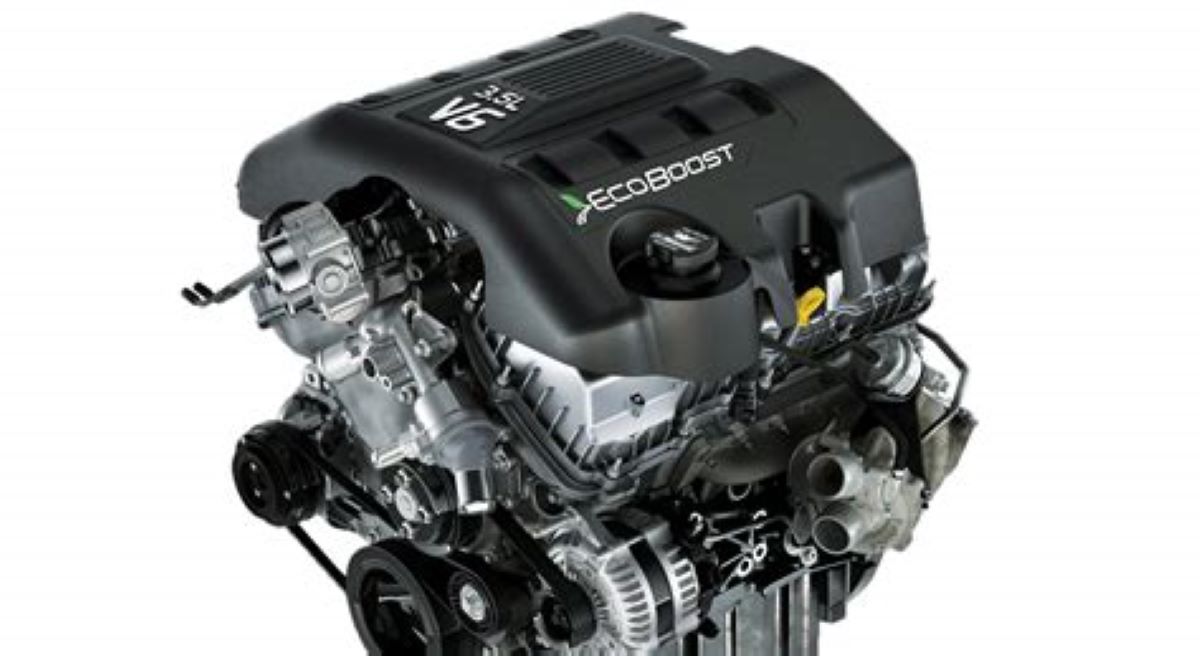
The concept behind this engine was to develop a strong alternative to large-displacement V8s, such as the V8 “Coyote” engine. The goal was to offer an engine capable of delivering the same power and torque as a naturally aspirated 6.0L V8 while significantly reducing fuel consumption and lowering emissions of harmful pollutants into the atmosphere.
Production of this engine officially began in 2009, and as Ford expanded its use across multiple vehicles, it quickly found a prominent role in one of Ford’s most successful platforms—the Ford F-150.
This move made perfect sense, given that EcoBoost-equipped F-150s offered a more affordable price point while avoiding the typical downsides associated with smaller displacement, naturally aspirated 6-cylinder engines, especially when compared to the V8 F-150 variants.
5. 4.2L Essex V6 (1997–2008)
Found in base model F-150s and some E-Series vans, the 4.2L V6 is widely regarded as one of Ford’s weakest engines.
Common failures include blown head gaskets, intake manifold leaks, and premature timing chain wear.
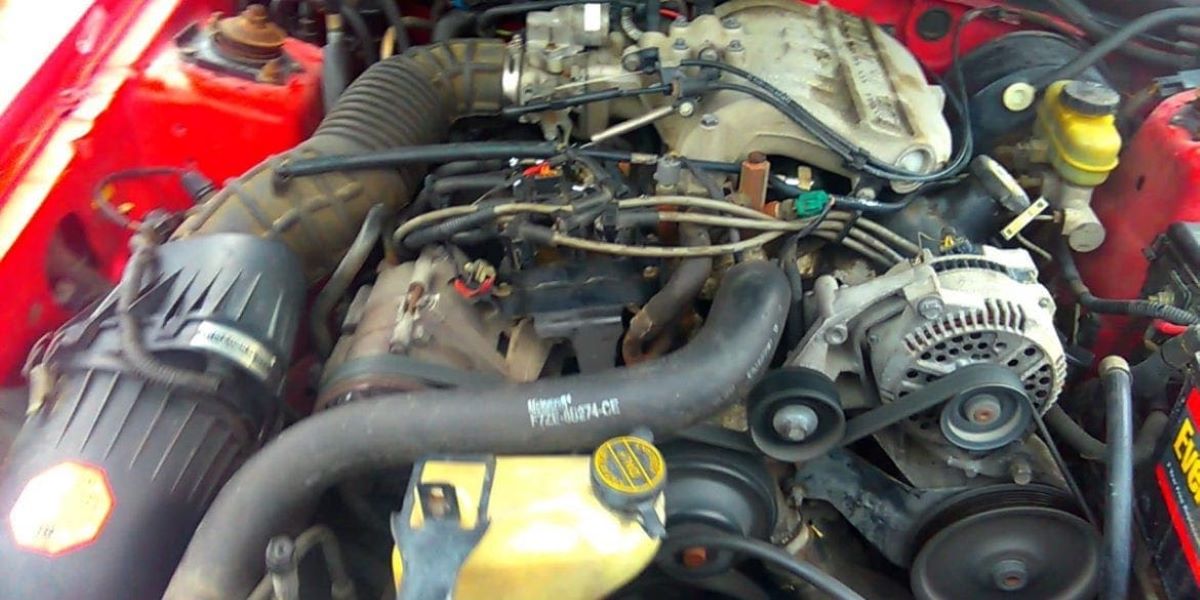
It lacked both the durability of the 4.9L inline-6 and the performance of newer V6s, making it a downgrade in almost every sense.
Ford has produced both icons of durability and cautionary tales in engine design. The Coyote V8, 7.3L Power Stroke, and 4.9L I6 are go-to options for those seeking longevity and dependability.
The engine is often considered the heart of a vehicle; when that “heart” experiences issues, the car can no longer operate as expected. For this reason, Ford invested significant effort into the development of the 4.2L V6 engine, also known as the Ford Essex V6 in Canada.
Despite this, a number of persistent problems continue to impact this engine series, creating inconvenience for many drivers. This article will explore all the known Ford 4.2L V6 engine problems in detail.
The most common issues with the 4.2L engine are related to components such as the timing cover gasket, intake manifold gasket, oil pump, and more. One of the most frequent problems is the timing cover gasket.
This part plays a critical role in protecting the chain between the camshaft and crankshaft, as well as shielding the timing belt and engine valves during internal combustion. It also contributes to sealing the engine and preventing contamination from dirt.
When the timing cover gasket wears out, which is more likely in older vehicles, it can cause the engine to stop unexpectedly. Some noticeable symptoms include the automatic warning light turning on, gas leaking from the car body, knocking noises, and the engine feeling unusually heavy during operation.
Although you might still be able to drive when only a few drops of fuel are leaking, allowing the issue to go unresolved will inevitably lead to more severe problems. In such cases, replacing or repairing the gasket promptly is highly recommended.
Another common and serious issue involves the oil pump. This essential component draws oil from the oil pan and delivers it through the filter to critical engine parts like the bearings.
While oil pumps are designed to function reliably for years, they can still develop faults. The first sign of trouble is usually the engine oil pressure light coming on. Unfortunately, many drivers dismiss this warning, assuming it’s insignificant. However, any irregularity in engine signals should not be ignored.
A drop in oil pressure or an oil leak could be the underlying cause. You can verify the issue by adding a bit of gasoline to the dipstick and observing whether the warning light changes. Additional signs include a drop in oil pressure, increased engine temperature, and strange noises from the valve train or oil pump.
The intake manifold gasket has also been a common source of trouble, especially in vehicles built before January 15, 1998. Earlier models were equipped with lower-quality gaskets that were more prone to failure.
In response, Ford introduced a thicker gasket in later models to ensure a better seal between the manifold and the engine. When these gaskets begin to fail, you may notice a rise in engine temperature, coolant leaks when the car is parked, backfiring due to an incorrect air-to-fuel ratio, or a change in the color of the engine fuel.
These symptoms can be subtle, so regular engine inspections are essential. Even minor indicators can point to a developing problem with the intake manifold that, if neglected, may result in extensive damage.
Another well-known issue affecting the 4.2L engine, particularly in the Ford F-150, is exhaust manifold leakage. One of the telltale signs of this problem is an irritating ticking sound when the engine is cold.
This happens because the metal expands as the engine heats up, temporarily sealing the cracks in the manifold. Sometimes, a small amount of exhaust smoke may also appear, although this isn’t always the case.
Problems with exhaust studs are another contributing factor. Exposure to environmental elements like humidity and temperature swings can cause studs to degrade, especially those near the firewall. This can result in holes that worsen the noise and damage the gasket.
In advanced cases, you may even notice the smell of exhaust inside the cabin. Symptoms to watch for include odd noises, a burning smell, smoke within the vehicle interior, reduced engine power, and increased fuel consumption.
The oil pan gasket is another weak point in the 4.2L engine. This gasket seals in the engine oil, preventing leaks. However, with time and mileage—typically between 20,000 to 50,000 miles—the gasket can wear down and lose its sealing effectiveness.
This leads to oil leaks and associated problems. Warning signs of a failing oil pan gasket include visible oil puddles under the vehicle, smoke from the engine bay, elevated engine heat, and accelerated oil loss.

